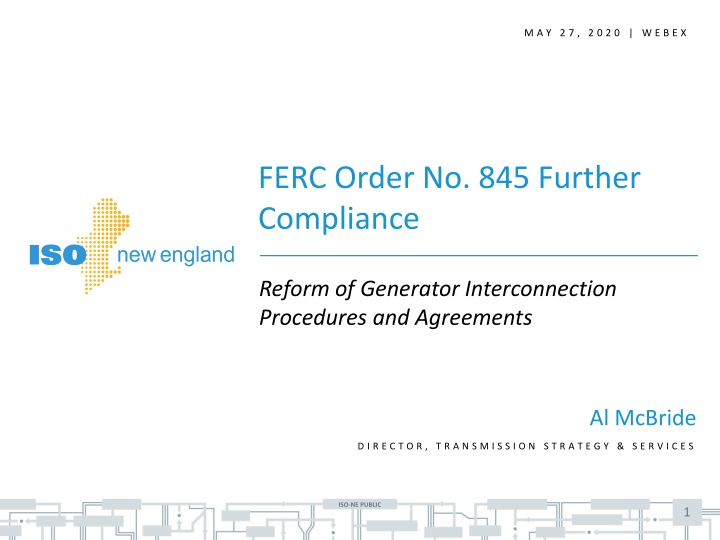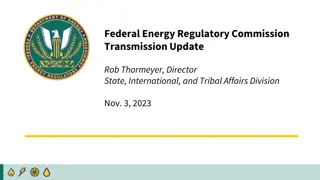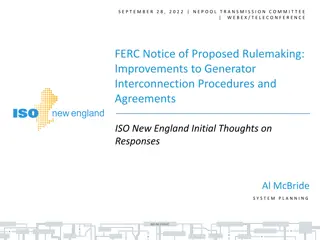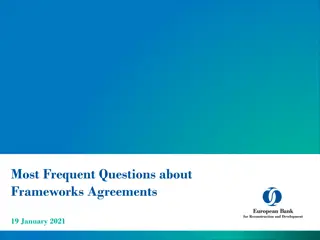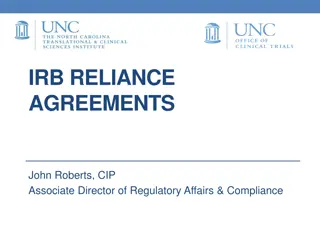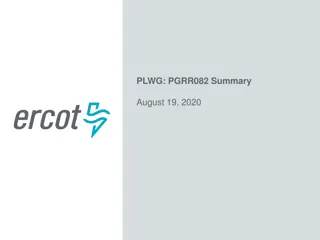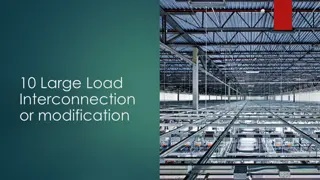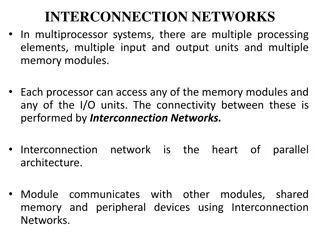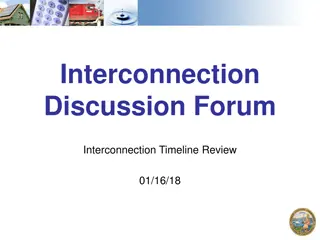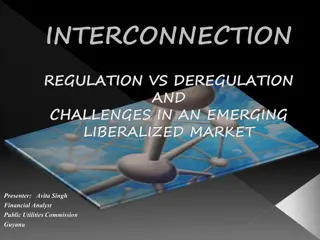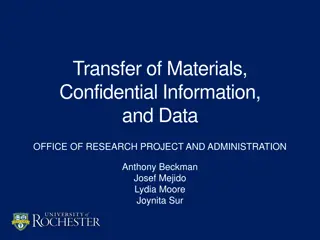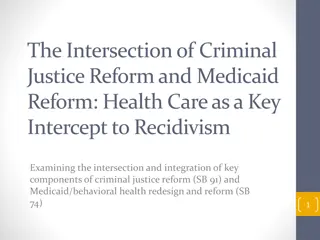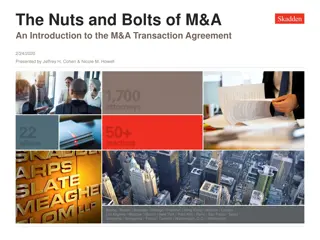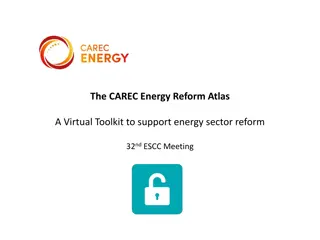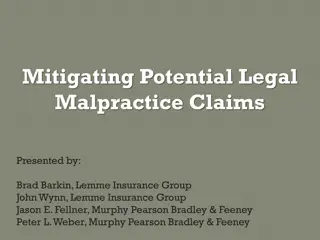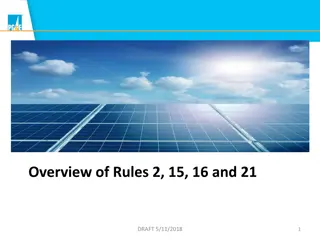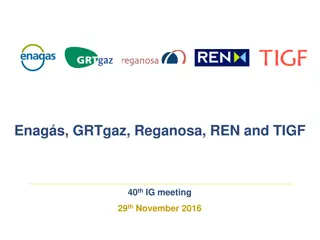Updates on Generator Interconnection Procedures and Agreements Reform
ISO-NE is implementing further compliance reforms in response to FERC Order No. 845 regarding Generator Interconnection Procedures and Agreements. This includes proposed tariff language updates and discussions on surplus interconnection services. The changes aim to enhance the efficiency and effectiveness of generator interconnections.
Download Presentation

Please find below an Image/Link to download the presentation.
The content on the website is provided AS IS for your information and personal use only. It may not be sold, licensed, or shared on other websites without obtaining consent from the author.If you encounter any issues during the download, it is possible that the publisher has removed the file from their server.
You are allowed to download the files provided on this website for personal or commercial use, subject to the condition that they are used lawfully. All files are the property of their respective owners.
The content on the website is provided AS IS for your information and personal use only. It may not be sold, licensed, or shared on other websites without obtaining consent from the author.
E N D
Presentation Transcript
M A Y 2 7 , 2 0 2 0 | W E B E X FERC Order No. 845 Further Compliance Reform of Generator Interconnection Procedures and Agreements Al McBride D I R E C T O R , T R A N S M I S S I O N S T R A T E G Y & S E R V I C E S ISO-NE PUBLIC 1
FERC Order No. 845 Further Compliance Proposed Effective Date: Further changes will be effective March 19, 2020 once accepted by FERC (Compliance Filing is required by July 17, 2020) On April 19, 2018, the Federal Energy Regulatory Commission ( Commission ) issued Order No. 845, its Final Rule on Reform of Generator Interconnection Procedures and Agreements The ISO held discussions at the NEPOOL Transmission Committee from May to September 2018 and March and April 2019 on its approach to comply with Order No. 845 ISO-NE and the PTO-AC filed proposed changes to Schedule 22 on May 22, 2019 On March 19, 2020, the Commission issued an Order on Compliance in Docket No. ER19-1951 partially accepting the May 22, 2019 Compliance Filing The ISO presented its initial Tariff redlines on April 28, 2020 This presentation provides additional changes in response to stakeholder discussions, a complete proposed redline can be found in the posted pro forma ISO-NE PUBLIC 2
OPTION TO BUILD Proposed Further Compliance Tariff Language Updates to the language presented at the April RC in green text ISO-NE PUBLIC 3
LGIA Article 5.2(13) Original PTO sponsored variation to be replaced with pro forma language. Interconnection Customer shall pay Interconnecting Transmission Owner the agreed upon amount of [$ PLACEHOLDER] for Interconnecting Transmissions Owner to execute responsibilities enumerated to Interconnecting Transmission Owner under this Article 5.2. Interconnecting Transmission Owner shall invoice Interconnection Customer for this total amount to be divided on a monthly basis pursuant to Article 12. ISO-NE PUBLIC 4
SURPLUS INTERCONNECTION SERVICE Proposed Further Compliance Tariff Language Updates to the language presented at the April RC in green text ISO-NE PUBLIC 5
Update to the ISOs Proposal for Surplus Service in the case of NR Interconnection Service The ISO received feedback at the April TC meeting regarding the application of Surplus Interconnection Service in the case of Network Resource Interconnection Service Committee members described how arrangements could be made, for example to identify when the surplus customer would not operate when the original customer needed to operate The ISO has also had time to continue to evolve the understanding of how co- located resources may operate in the energy and capacity markets Including the case where a limiting device is used to limit the overall output of a co- located facility The ISO is proposing that the original customer would identify and eventually memorialize in the Interconnection Agreement such terms of use of the Surplus Interconnection Service When necessary, a limiting device would be used to limit the overall output of a co- located facility Finally, FERC responded to ISO s Request for Clarification on May 19, 2020 The ISO is now proposing to adopt the Order No. 845/845A pro forma language regarding the scope of study for Surplus Interconnection Service requests ISO-NE PUBLIC 6
LGIA/LGIP Definitions Unused Capability shall mean (i) in the case of NR Interconnection Service at an existing, commercial Generating Facility, the MW quantity as determined by the Original Interconnection Customer (as defined in Section 3.3 of the LGIP), a continuous, or periodic, MW quantity as determined by the existing commercial Generating Facility and specified in an Interconnection Agreement, not to exceed the existing, commercial Generating Facility s NR Interconnection Service; and (ii) in the case of CNR Interconnection Service at an existing, commercial Generating Facility, for Summer, the Summer CNR Capability minus the latest Summer Qualified Capacity, and for Winter, the Winter CNR Capability minus the latest Winter Qualified Capacity ISO-NE PUBLIC 7
LGIP Section 3.3 Utilization of Surplus Interconnection Service. The Original Interconnection Customer shall specify the amount of Unused Capability that is available for use by the Surplus Interconnection Customer s Generating Facility. The total output of the Original Interconnection Customer s Generating Facility plus the Surplus Interconnection Customer s Generating Facility behind the same Point of Interconnection shall be limited to the maximum total amount of Interconnection Service granted to the Original Interconnection Customer as established in the Interconnection Agreement for the Original Interconnection Customer s Generating Facility. Control technology to restrict the total output of the Original Interconnection Customer s and Surplus Interconnection Customer s Generating Facilities shall be required in the case the facility s output is required in the case where the sum of the maximum output of the Original Interconnection Customer s Generating Facility plus the maximum output of the Surplus Interconnection Customer s Generating Facility exceeds the total amount of associated Interconnection Service granted to the Original Interconnection Customer. The Original Interconnection Customer must stipulate the amount of Unused Capability that is available for use by the Surplus Interconnection Customer s Generating Facility. Surplus Interconnection Service shall only be available at the existing Point of Interconnection of the Original Interconnection Customer s Generating Facility ISO-NE PUBLIC 8
LGIP Section 3.3.1 Studies for Surplus Interconnection Service may consist of reactive power, short circuit/fault duty, stability analyses, and/or other appropriate studies. Steady-state (thermal/voltage) analyses may be performed as necessary to ensure that all required reliability conditions are studied. The study shall consider the full Generating Facility capability to ensure the acceptability of the proposed control technology to restrict the total output of the Original Interconnection Customer s and Surplus Interconnection Customer s Generating Facilities. If the Surplus Interconnection Service was not studied under off-peak conditions, off-peak steady state analyses shall be performed to the required level necessary to demonstrate reliable operation of the Surplus Interconnection Service. If the original Interconnection System Impact Study is not available for the Original Interconnection Customer s Generating Facility, limited analysis may need to be performed Surplus Interconnection Service, both off-peak and peak analysis may need to be performed for the existing Generating Facility associated with the request for Surplus Interconnection Service. The reactive power, short circuit/fault duty, stability, and steady-state analyses for Surplus Interconnection Service will identify any additional Interconnection Facilities and/or Network Upgrades necessary. which may include, but not be limited to, both off-peak and peak analyses, and/or reactive power, short circuit/fault duty, stability, and steady-state analyses, to confirm the Surplus Interconnection Service request can be accommodated without the need for additional upgrades and a new Interconnection Request. Any analyses shall be performed at the Surplus Interconnection Customer s expense. ISO-NE PUBLIC 9
LGIP Section 3.3.1 (Continued) System Operator shall continue such studies until it determines whether any additional Interconnection Facilities and/or Network Upgrades are necessary to accommodate the Surplus Interconnection Customer s Generating Facility. If additional Network Upgrades are required to accommodate the Surplus Interconnection Customer s Generating Facility, Surplus Interconnection Service is not applicable and the Surplus Interconnection Customer may pursue its Generating Facility s interconnection by submitting a new Interconnection Request. The Interconnection Agreement for the Original Interconnection Customer s Generating Facility shall be replaced by a new agreement among the System Operator, Interconnecting Transmission Owner, Original Interconnection Customer, and Surplus Interconnection Customer. The agreement shall be in the form of the most currently effective LGIA, modified to reflect the Surplus Interconnection Customer s Generating Facility and the amount of, and the terms for the use of, and the associated Surplus Interconnection Service. The agreement shall be developed and negotiated in accordance with Section 11 of the LGIP, at the Surplus Interconnection Customer s expense. ISO-NE PUBLIC 10
ADDITIONAL CONFORMING CHANGES Newly included since the April TC meeting ISO-NE PUBLIC 11
Sections 3.5.2.1-2 Study Timelines Conforming changes related to the Commission accepted study timeline modifications in Docket No. ER19-1952 Change timelines from 45 to 90 days for processing Interconnection Feasibility Studies in Section 3.4.2.1 Change timelines from 90 to 270 days for processing Interconnection System Impact Studies in Section 3.4.2.2 ISO-NE PUBLIC 12
Stakeholder Schedule Stakeholder Committee and Date Scheduled Project Milestone Transmission Committee April 28, 2020 First review of proposed Tariff language Transmission Committee May 27, 2020 Second review of proposed Tariff language and Vote Participants Committee June 4, 2020 Vote ISO-NE PUBLIC 13
